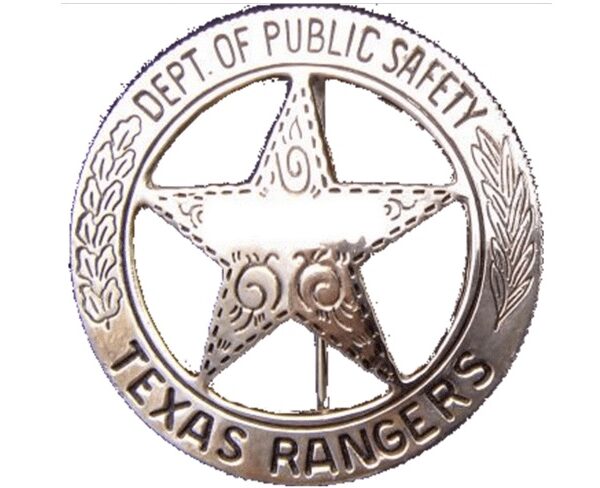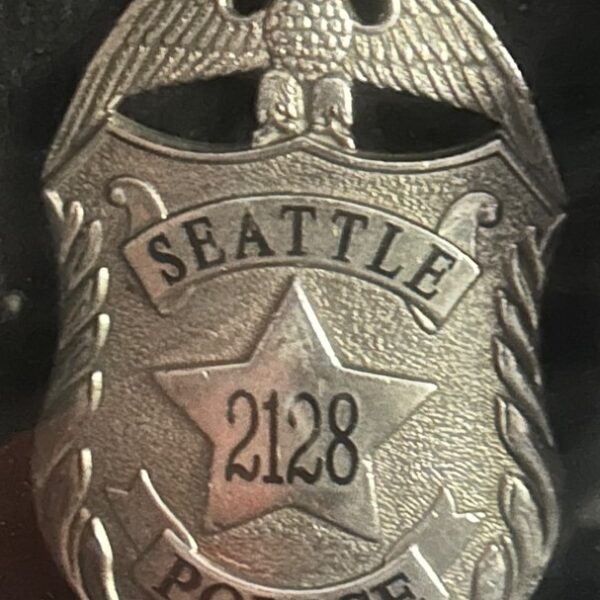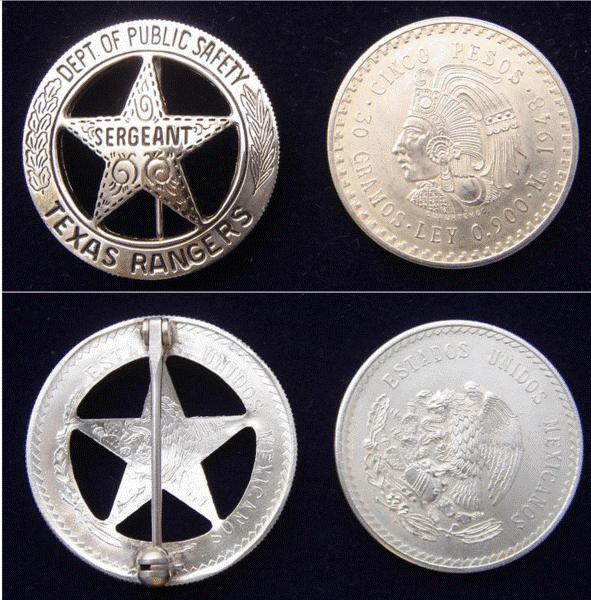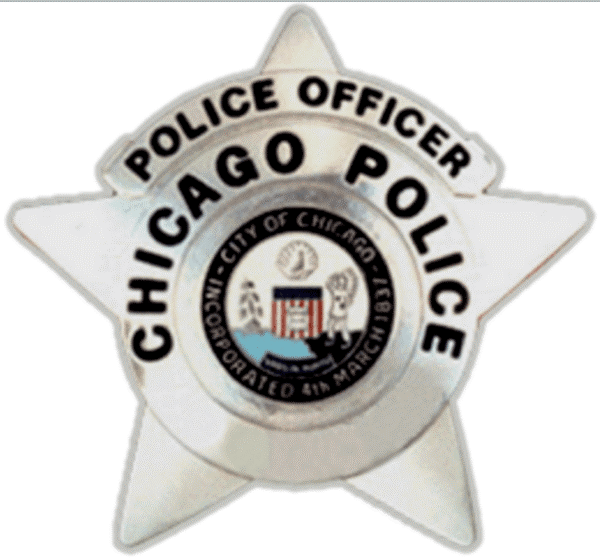
By Steve Pomper

Texas Rangers badge 1948, Photo (Public Domain Wiki Media
To even my keel with all this anti-police messaging coming from certain quarters (including the insult of those feigning political amnesia and are now pretending to be pro-police), I thought I’d divert into a topic I find interesting that both cop and non-cop readers may also enjoy: Badges.
First, with deference to my retired firefighter wife, I acknowledge that our public safety brother and sister hose draggers also wear badges. Well, of course, they do. They need heroes to emulate, too, right? Seriously, though, I’m limiting this discussion to cop badges because—well—I was a cop.
In my book De-Policing America (Post Hill Press, 2018), I included the police badge and its mysterious effect on the public. I wrote “I’ve noticed over the years people stare at two things … my badge and my gun.”
After I graduated from the academy, family and friends asked me if they could see my badge? Apparently, they also wanted to touch it, as evidenced by snatching it from my hand. To my point, my wife and I went out with a fellow firefighter and his wife. The first thing his wife wanted to see was my badge. I also described that she rubbed “it solemnly as if a genie might appear.”
There’s something about the iconic police badge that conveys attributes beyond its inexpensive metal composition. Authority, courage, integrity, honor, respect, trust, and patriotism are among them. It’s not random that officers swear their solemn oaths to uphold the laws of the land during badge-pinning ceremonies upon graduating from the academy. The badge seals the oath.
According to Outside the Badge, “The police badge is not easy to obtain and serves as a beacon of light at the end of a long hiring process and intense training. Those who have made it through the hiring process then have to attend the police academy.”

Seattle Police Officer badge Photo (S. Pomper)
Some historians believe a cop’s badge is a miniature replica of a medieval knight’s shield. Outside the Badge draws a possible historical connection, noting knights carried their shields in their left hands, and law enforcers wear their badges on the left breast of their uniform shirts, over their hearts.
You also see the cop badge appear in popular culture, from the badge on a uniform as in old TV cop shows like CHIPS to the mysterious man in a Western whose identity is suddenly revealed when his coat inadvertently falls open, and that shiny silver star appears on the screen. The badge changes how the audience views the character.
The badge plays a prominent part in the movie Practical Magic. Playing a detective from Arizona, Aidan Quinn’s character’s five-point star badge becomes a powerful talisman in defeating an inhuman bad guy. But where does that mythical power come from?
Society imbues the emblem with the respect and authority that the decent men and women who’ve donned badges and confronted bad guys, have earned for it with their selfless service. Though the aura of the badge may seem mythical, the feeling the badge evokes in both the good guys who wear it and the bad guys who fear it is very real.
According to irvinhahn.com, a Baltimore, MD. public safety badge manufacturer since 1898, “A law enforcement badge should always provide an idea of comfort to civilians in the time of stress, and the bearer should always understand the significance their insignia can have on others. A proudly displayed badge is a sign of trust and sacrifice, and it can motivate both those who see it worn and those who wear it to do good.”
Now, let’s leave the mystique and delve a bit into the history and some details about law enforcement badges. First, everyone knows the two most traditional badge shapes. One is based on the (knight’s) shield, mostly used by police departments, and the other is the star most often associated with sheriffs and marshals.
The sizes and imagery vary, including the badges that combine the shield and star motif with a star within a circle (shield). Of course, the most famous of these are associated with the Texas Rangers.
Often seen pinned to the left breast of a Stetson-wearing lawman’s or woman’s button-up shirt, the Texas Rangers badge has a unique history. According to identifymedals.com, badges were initially independently sourced by individual rangers according to their personal desires. And while the first badge may have belonged to Ranger Leander McNelly in 1875, the oldest Texas Rangers badge known is the Ira Aten badge dating back to the 1880s.
Historians believe that Ranger Aten or a local silversmith fashioned the badge from a Mexican Cinco Peso coin. Why not a U.S. or Texas coin? Authentictexas.com says it was easy to work with because of its high silver content. And, more importantly, because it was foreign, “defacing it was not against the law.”

Texas Rangers badge and Mexican Cinco pesos coin Photo: (Public Domain, Wiki Media)
The shape of Ranger Aten’s badge is the one we are all familiar with today thanks to shows like Chuck Norris’s Walker Texas Ranger. A silver five-point star within a circle with Texas Rangers inscribed on it. Not surprisingly, the star represents the Texas Lone Star.
The Chicago Police Department reverses the Rangers’ badge motif, employing a circle within a five-point star. San Francisco is another agency that uses a star design but a seven-point star, as seen in Clint Eastwood’s Dirty Harry movies.

Chicago Police officer badge Photo: (GoBlue85, CC 4.0, Wiki Commons)
Aside from the quintessential shield and star designs, other shapes have been and are used, including the crescent moon in New Orleans and the shape of the state of Louisiana for their state police badges.
Some agencies employ a badge shaped like an arrowhead. And items appearing within the badge are as diverse as the unique areas they represent. For example, my Seattle badge is quite simple but elegant in it’s eagle-topped shield design with “Seattle” embossed across the top, “Police” below, and an officer identification number in the center, within a star. Another example of a combined shield and star theme.
I’ll conclude with two badges containing some of the most whimsical imagery of any police badge in the U.S. The Salem, Mass. Police Department badge contains, what else, a witch. Similarly, the Village of Sleepy Hollow P.D. in Upstate New York displays, you guessed it, the Headless Horseman. These are not only enigmatic and historical but also, they demonstrate it may be worth a little more exploration into America’s law enforcement badges.
Make a difference. Support the NPA.






